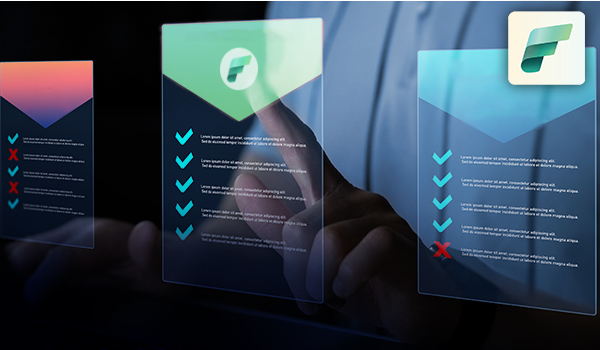When evaluating data platforms, organizations often focus on licensing fees or infrastructure costs—but those numbers only scratch the surface. True Total Cost of Ownership (TCO) includes far more: engineering effort, integration complexity, governance, scalability, and long-term adaptability. And when viewed through that lens, Microsoft Fabric often delivers a compelling value proposition over legacy data architectures.
Why TCO Matters in the Modern Data Landscape
Legacy platforms may have served their purpose when data was centralized in a data warehouse or lakehouse and teams operated in silos. But today’s organizations need more: real-time insights, scalable AI capabilities, and seamless collaboration across departments. Supporting that with disconnected tools and infrastructure creates hidden costs in both dollars and agility.
Enter Microsoft Fabric—a unified analytics platform that brings data movement, storage, processing, governance, and visualization into a single environment. But how does it actually compare in terms of cost?
Let’s break it down.
1. Infrastructure and Licensing
Legacy Platforms
- Typically require multiple systems (ETL tools, data warehouses, lake storage, analytics tools) with separate licenses and infrastructure.
- On-premises systems demand costly hardware and ongoing maintenance.
- Scaling requires significant re-architecture and capital expenditure.
Microsoft Fabric
- Pay-as-you-go pricing under Microsoft’s SaaS model.
- Includes integrated services (OneLake, Synapse, Power BI, Data Activator, and more) under a single SKU.
- Built on Azure, enabling elastic scaling and automatic resource optimization.
- Centralized management reduces the cost and complexity of monitoring, securing, and administering the environment—eliminating much of the overhead associated with segmented infrastructure.
Verdict:Fabric’s consolidated pricing and cloud-native elasticity eliminate much of the complexity and overhead that drives up TCO in legacy environments.
2. Operational Efficiency
Legacy Platforms
- Require cross-functional teams to manage data pipelines, storage, governance, and analytics separately.
- Data engineers spend significant time troubleshooting, orchestrating workflows, and reconciling version mismatches.
- Upgrades and patches can be disruptive and time-consuming.
Microsoft Fabric
- Offers deeply integrated services with native interoperability.
- Reduces duplication of effort by allowing teams to collaborate in shared workspaces.
- Automated updates and centralized governance reduce operational burden.
Verdict:Less maintenance, more automation, and unified experiences with Fabric significantly reduce the human cost of running modern analytics.
3. Data Governance and Security
Legacy Platforms
- Governance is typically layered on top through additional tools or manual policies.
- Role-based access control, lineage tracking, and auditability are inconsistent across platforms.
- Compliance requires custom processes and monitoring.
Microsoft Fabric
- Built-in governance with OneSecurity ensures consistent access controls across every component.
- Unified data lineage, cataloging, and compliance tools through Microsoft Purview integration.
- Supports zero-trust architecture and integrates seamlessly with Microsoft 365 security policies.
Verdict:Fabric’s governance-by-design approach reduces compliance risk and lowers costs related to audits, breaches, and policy enforcement.
4. Time to Insight
Legacy Platforms
- Fragmented architecture slows down data delivery to end users.
- Business users rely heavily on IT to access or analyze data.
- ML and AI use cases require separate infrastructure and expertise.
Microsoft Fabric
- Data is available in OneLake instantly for any tool in the ecosystem.
- Power BI integration enables self-service analytics directly within business applications.
- AI capabilities are embedded and scalable via Synapse ML, Copilot, and real-time insights from Data Activator.
- Unified architecture reduces the need for complex networking setups like peering or VPNs, which are often required to connect segmented tools in legacy environments—saving both infrastructure costs and specialized skill requirements.
Verdict:The faster your teams can get insights, the greater the business value. Fabric dramatically shortens the distance between data and decision.
5. Future Scalability and Innovation
Legacy Platforms
- Adding new capabilities often requires bolt-on tools or replatforming.
- Legacy systems struggle to support real-time data, AI, and advanced analytics without major overhauls.
- Technical debt accumulates, reducing agility.
Microsoft Fabric
- Built for extensibility and futureproofing with open APIs and AI-native services.
- Roadmap is aligned with Microsoft’s broader AI, Azure, and M365 investments.
- Enables composable data strategies that evolve with your business needs.
- Frequent releases of new capabilities—like Data Activator, Data Agents, and Copilot integrations—make it easier to implement advanced analytics and AI use cases without starting from scratch or layering on new tools.
Verdict:Fabric doesn’t just lower costs today—it protects your investments and enables innovation tomorrow.
Final Thoughts: Look Beyond the License Price
On paper, legacy platforms may appear cheaper due to sunk costs or existing licenses. But those numbers rarely reflect the full picture. When you consider the total cost of ownership—people, processes, governance, agility, and speed to insight—Microsoft Fabric emerges as a modern, efficient, and future-ready platform.
Whether you’re consolidating tool sprawl, scaling AI use cases, or preparing for your next digital transformation initiative, evaluating TCO is critical—and Fabric helps tip the scales.
Want to learn how Microsoft Fabric can lower costs and deliver ROI fast? Connect with one of our humans for a Microsoft Fabric Jumpstart assessment and see what it could mean for your organization.





